AKTC Work in the world
Gardens of Paradise: past and present
Jurjen van der Tas describes the history of Islamic gardens, how they are being adapted for modern use, and the Aga Khan Trust for Culture’s 20-year journey of creating and restoring paradise gardens across the Islamic world.
By Jurjen van der Tas, Deputy Director of the Aga Khan Historic Cities Programme
Gardens of Paradise take their name from the old Persian pairi dez, meaning “surrounded by a wall”. Transliterated into the Greek as paradeisos and henceforth known to us as Gardens of Paradise, they are in essence self-contained refuges for flora and fauna, with humans as their keepers and end users. The dry conditions that are prevalent in the Middle East and southern Europe make it essential for such gardens to have access to a permanent source of water.
Photos, videos and more at:
https://www.akdn.org/our-stories/garden ... nd-present
Jurjen van der Tas describes the history of Islamic gardens, how they are being adapted for modern use, and the Aga Khan Trust for Culture’s 20-year journey of creating and restoring paradise gardens across the Islamic world.
By Jurjen van der Tas, Deputy Director of the Aga Khan Historic Cities Programme
Gardens of Paradise take their name from the old Persian pairi dez, meaning “surrounded by a wall”. Transliterated into the Greek as paradeisos and henceforth known to us as Gardens of Paradise, they are in essence self-contained refuges for flora and fauna, with humans as their keepers and end users. The dry conditions that are prevalent in the Middle East and southern Europe make it essential for such gardens to have access to a permanent source of water.
Photos, videos and more at:
https://www.akdn.org/our-stories/garden ... nd-present
The use of water features in AKDN's rehabilitation of green spaces
For many Muslims, gardens reflect the bounty of God and the blessings of life. Through the long history of Islam, there has been an outpouring of poetry and art that engages with spiritual topics, among them gardens as an embodiment of paradise, both earthly and heavenly. So too, extensive poetry, art and literature have been created that presents gardens as secular realms of social intercourse, pleasure, romance, and diplomacy, as well as a retreat from the hardships of work, conflict and a harsh environment.
One nearly universal element that finds multiple expressions is water. Water is an essential ingredient found in virtually all of the gardens of the Islamic world.
The statement that “Water is the gift of God to man and the earth” can be found in the Qur'an. In Islamic culture, originally an agricultural society, a significant amount of technology and law was devoted to water. Not surprisingly its use and deployment has been explored extensively in gardens of the Islamic world, and artistic devices produced to exploit its many changeable characteristics of movement, sound, reflection, and refraction through channels, runnels, falls, cascades, sheets, sprays, basins, tanks, pools, ponds and lakes are among the glories of this rich and diverse heritage.
Gallery at:
https://www.akdn.org/gallery/use-water- ... een-spaces
For many Muslims, gardens reflect the bounty of God and the blessings of life. Through the long history of Islam, there has been an outpouring of poetry and art that engages with spiritual topics, among them gardens as an embodiment of paradise, both earthly and heavenly. So too, extensive poetry, art and literature have been created that presents gardens as secular realms of social intercourse, pleasure, romance, and diplomacy, as well as a retreat from the hardships of work, conflict and a harsh environment.
One nearly universal element that finds multiple expressions is water. Water is an essential ingredient found in virtually all of the gardens of the Islamic world.
The statement that “Water is the gift of God to man and the earth” can be found in the Qur'an. In Islamic culture, originally an agricultural society, a significant amount of technology and law was devoted to water. Not surprisingly its use and deployment has been explored extensively in gardens of the Islamic world, and artistic devices produced to exploit its many changeable characteristics of movement, sound, reflection, and refraction through channels, runnels, falls, cascades, sheets, sprays, basins, tanks, pools, ponds and lakes are among the glories of this rich and diverse heritage.
Gallery at:
https://www.akdn.org/gallery/use-water- ... een-spaces
Video Quote: The Work of AKTC for the Benefit of Humanity at Large
Video:
https://www.youtube.com/watch?v=RhFRlwKyxIA
Speech by His Highness the Aga Khan at the inauguration of Amir Aqsunqur Mosque, Cairo, Egypt,
Video:
https://www.youtube.com/watch?v=RhFRlwKyxIA
Speech by His Highness the Aga Khan at the inauguration of Amir Aqsunqur Mosque, Cairo, Egypt,
Video trailer: Restoring Dignity
Screening exclusively on The Ismaili TV, this three-part documentary series features the transformational work of the Aga Khan Trust for Culture in the cities of Kabul, Lahore, and Delhi. Watch the first part premiere at the.ismaili/tv on Sunday 26 April.
Video:
https://the.ismaili/global/news/feature ... -173435533
Screening exclusively on The Ismaili TV, this three-part documentary series features the transformational work of the Aga Khan Trust for Culture in the cities of Kabul, Lahore, and Delhi. Watch the first part premiere at the.ismaili/tv on Sunday 26 April.
Video:
https://the.ismaili/global/news/feature ... -173435533
Digital Magazine: AKTC At Home, Issue 2
The second issue of AT HOME, a new digital magazine presenting the programmes and projects of the Aga Khan Trust for Culture (AKTC).
https://the.ismaili/global/digital-maga ... me-issue-2
The second issue of AT HOME, a new digital magazine presenting the programmes and projects of the Aga Khan Trust for Culture (AKTC).
https://the.ismaili/global/digital-maga ... me-issue-2
Digital Magazine: AKTC At Home, Issue 3
The third issue of AT HOME, a new digital magazine presenting the programmes and projects of the Aga Khan Trust for Culture (AKTC). This issue will shine a spotlight on the Aga Khan Award for Architecture and also feature the Aga Khan Music Programme, the Aga Khan Historic Cities Programme, Aga Khan Museum, and a presentation on the notion of culture and pluralism.
Read magazine at
https://the.ismaili/global/digital-maga ... me-issue-3
The third issue of AT HOME, a new digital magazine presenting the programmes and projects of the Aga Khan Trust for Culture (AKTC). This issue will shine a spotlight on the Aga Khan Award for Architecture and also feature the Aga Khan Music Programme, the Aga Khan Historic Cities Programme, Aga Khan Museum, and a presentation on the notion of culture and pluralism.
Read magazine at
https://the.ismaili/global/digital-maga ... me-issue-3
The Heritage Keeper: Meet Ratish Nanda who was instrumental in restoring Humayun Tomb and Sunder Nursery in Delhi Restoring monuments and parks are all in day’s work for Ratish Nanda, CEO, Aga Khan Trust for culture. He is responsible for some of the most fascinating restorations in the country and abroad
Restoring monuments and parks are all in day’s work for Ratish Nanda, CEO, Aga Khan Trust for culture. He is responsible for some of the most fascinating restorations in the country and abroad
In a city as populated as Delhi, there is a certain charm in rediscovering open spaces as it is a sensorial treat. One of the newest hot spots in Delhi, the Sunder Nursery, a 16th-century heritage park, spread over 90 acres and dotted with water bodies, splendid monuments, and greenery, promises to be just that. It is popular place for people from all walks of life and has already found a place in Time Magazine’s widely recommended, ‘The World's 100 Greatest Places to Visit list.’
The man instrumental in reviving Sunder Nursery and monuments such as the Humayun Tomb, is Ratish Nanda, CEO Aga Khan Trust for Culture. In conversation with YS Weekender, Ratish speaks about his passion for heritage buildings and his ongoing work in the field of architecture.
Photos and more...
https://yourstory.com/weekender/ratish- ... mayun-tomb
Restoring monuments and parks are all in day’s work for Ratish Nanda, CEO, Aga Khan Trust for culture. He is responsible for some of the most fascinating restorations in the country and abroad
In a city as populated as Delhi, there is a certain charm in rediscovering open spaces as it is a sensorial treat. One of the newest hot spots in Delhi, the Sunder Nursery, a 16th-century heritage park, spread over 90 acres and dotted with water bodies, splendid monuments, and greenery, promises to be just that. It is popular place for people from all walks of life and has already found a place in Time Magazine’s widely recommended, ‘The World's 100 Greatest Places to Visit list.’
The man instrumental in reviving Sunder Nursery and monuments such as the Humayun Tomb, is Ratish Nanda, CEO Aga Khan Trust for Culture. In conversation with YS Weekender, Ratish speaks about his passion for heritage buildings and his ongoing work in the field of architecture.
Photos and more...
https://yourstory.com/weekender/ratish- ... mayun-tomb
Digital Magazine: AKTC At Home, Issue 4
The fourth and final issue of AT HOME, a digital magazine presenting the programmes and projects of the Aga Khan Trust for Culture (AKTC), will shine a spotlight on parks and gardens in the AKTC portfolio.
https://the.ismaili/global/digital-maga ... me-issue-4
The fourth and final issue of AT HOME, a digital magazine presenting the programmes and projects of the Aga Khan Trust for Culture (AKTC), will shine a spotlight on parks and gardens in the AKTC portfolio.
https://the.ismaili/global/digital-maga ... me-issue-4
Video Quote: Water in the Gardens as a Reminder of Divine Blessing
Video:
https://www.youtube.com/watch?v=X6d77wM5hbc
Speech by His Highess the Aga Khan at the inauguration of the Aga Khan Park, Toronto, Canada, 25 May 2015.
Video:
https://www.youtube.com/watch?v=X6d77wM5hbc
Speech by His Highess the Aga Khan at the inauguration of the Aga Khan Park, Toronto, Canada, 25 May 2015.
Video Quote: Cultural Restoration Hand in Hand with Socio Economic Improvement
Video:
https://www.youtube.com/watch?v=68lL5oRPE7U
Speech by His Highness the Aga Khan at the Royal Toledo Foundation award ceremony, Toledo, Spain, 2 March 2006
Video:
https://www.youtube.com/watch?v=68lL5oRPE7U
Speech by His Highness the Aga Khan at the Royal Toledo Foundation award ceremony, Toledo, Spain, 2 March 2006
Bala Hissar Citadel in Kabul, Afghanistan to be restored by AKTC
Kabul, Afghanistan, 26 October 2020 - Bala Hissar citadel site, which is a registered National Monument and the largest open space in the Kabul, will be transformed by the Aga Khan Trust for Culture (AKTC) into a public archaeological park. The works follow a decree in 2018 by His Excellency President Mohammad Ashraf Ghani and funding by the ALIPH Foundation.
When completed, interventions will ensure that one of the most significant historic sites in the country is protected for posterity. Visitors are expected to be able to understand and appreciate Afghanistan’s rich history and cultural heritage while they take advantage of the site’s recreational, social and cultural activities (such as those taking place at Babur’s and Chihilsitoon Gardens).
“The site will become Afghanistan’s first public archaeological park and a critical source for better understanding of its rich history and diverse heritage for tens of thousands of Afghans,” said Ajmal Maiwandi, Chief Executive Officer at Aga Khan Trust for Culture Afghanistan.
Based on a Memorandum of Understanding between AKTC and the Government of the Islamic Republic of Afghanistan -- endorsed in 2016 during the Brussels Conference on Afghanistan -- AKTC committed to addressing critical conservation and archaeological issues at the site. It started works with internal resources in 2017 when a programme for emergency structural stabilisation was instituted to prevent the collapse of the historic fortification.
The four-year project, funded by the ALIPH Foundation, will be conducted by AKTC under the remit of the Minister of Information and Culture, and in collaboration with the Departments of Historic Monuments and Archaeology, the National Museum, and international expert organisations including the French Archaeological Delegation. It is expected that hundreds of Afghans will be engaged directly in the intensive works, providing essential employment and training opportunities for a wide range of craftsmen and professionals.
This announcement follows the award of a grant by the Government of India for complementary works at the Bala Hissar citadel focusing on the structural consolidation of existing above-ground fortifications.
https://www.akdn.org/press-release/bala ... tored-aktc
Kabul, Afghanistan, 26 October 2020 - Bala Hissar citadel site, which is a registered National Monument and the largest open space in the Kabul, will be transformed by the Aga Khan Trust for Culture (AKTC) into a public archaeological park. The works follow a decree in 2018 by His Excellency President Mohammad Ashraf Ghani and funding by the ALIPH Foundation.
When completed, interventions will ensure that one of the most significant historic sites in the country is protected for posterity. Visitors are expected to be able to understand and appreciate Afghanistan’s rich history and cultural heritage while they take advantage of the site’s recreational, social and cultural activities (such as those taking place at Babur’s and Chihilsitoon Gardens).
“The site will become Afghanistan’s first public archaeological park and a critical source for better understanding of its rich history and diverse heritage for tens of thousands of Afghans,” said Ajmal Maiwandi, Chief Executive Officer at Aga Khan Trust for Culture Afghanistan.
Based on a Memorandum of Understanding between AKTC and the Government of the Islamic Republic of Afghanistan -- endorsed in 2016 during the Brussels Conference on Afghanistan -- AKTC committed to addressing critical conservation and archaeological issues at the site. It started works with internal resources in 2017 when a programme for emergency structural stabilisation was instituted to prevent the collapse of the historic fortification.
The four-year project, funded by the ALIPH Foundation, will be conducted by AKTC under the remit of the Minister of Information and Culture, and in collaboration with the Departments of Historic Monuments and Archaeology, the National Museum, and international expert organisations including the French Archaeological Delegation. It is expected that hundreds of Afghans will be engaged directly in the intensive works, providing essential employment and training opportunities for a wide range of craftsmen and professionals.
This announcement follows the award of a grant by the Government of India for complementary works at the Bala Hissar citadel focusing on the structural consolidation of existing above-ground fortifications.
https://www.akdn.org/press-release/bala ... tored-aktc
Aga Khan Trust for Culture receives ICCROM-Sharjah award for best practice in conservation of Islamic heritage
Sharjah, UAE, 10 November 2020 - The rehabilitation of the central souk in the Old City of Aleppo by the Aga Khan Trust for Culture (AKTC) has received an ICCROM-Sharjah Award for Best Practice in Cultural Heritage Conservation and Management in the Arab region. The biennial Award seeks to honour and reward outstanding work that contributes to the protection and vitality of tangible cultural heritage in the Arab world.
The prize, a joint collaboration between ICCROM and the Emirate of Sharjah, United Arab Emirates, is under the patronage of His Highness Sheikh Dr Sultan bin Mohammed Al Qasimi, Member of the Supreme Council, Ruler of Sharjah.
As part of the Aga Khan Development Network’s humanitarian assistance activities, including emergency health care and food aid, AKTC undertook surveys and technical studies for the rehabilitation of Souk al-Saqatiyya and planned for the Souk’s rehabilitation. In Phase 1, it began a pilot project in the Aleppo Souk – the largest medieval souk in the Middle East – which had been badly damaged during the conflict.
The prototype for conservation included all public spaces along 150 metres of the Souk, including the vaulted roof and central passageway, essential infrastructure and utilities, as well as three completed shops showcasing the possible finishes of individual shops. The prime objective was to improve the infrastructure and utilities in the Souk.
During the COVID-19 crisis in 2020, the work continued. This phase comprised the rehabilitation of connecting arteries in order to link the completed phase 1 work of Souk al-Saqatiyya to exterior entry points, including Souk Khan al-Harir. The Souk Khan al-Harir contains 60 shops and serves three other large khans (an inn for travelers, built on a central courtyard).
The ICCROM-Sharjah Award works to help “safeguard the cultural heritage of the Arab region; promote international ethics in the practice of tangible heritage conservation; facilitate the exchange of knowledge and experience across borders; enhance public awareness and appreciation of cultural heritage; and encourage excellence through example”.
https://www.akdn.org/press-release/aga- ... nservation
Sharjah, UAE, 10 November 2020 - The rehabilitation of the central souk in the Old City of Aleppo by the Aga Khan Trust for Culture (AKTC) has received an ICCROM-Sharjah Award for Best Practice in Cultural Heritage Conservation and Management in the Arab region. The biennial Award seeks to honour and reward outstanding work that contributes to the protection and vitality of tangible cultural heritage in the Arab world.
The prize, a joint collaboration between ICCROM and the Emirate of Sharjah, United Arab Emirates, is under the patronage of His Highness Sheikh Dr Sultan bin Mohammed Al Qasimi, Member of the Supreme Council, Ruler of Sharjah.
As part of the Aga Khan Development Network’s humanitarian assistance activities, including emergency health care and food aid, AKTC undertook surveys and technical studies for the rehabilitation of Souk al-Saqatiyya and planned for the Souk’s rehabilitation. In Phase 1, it began a pilot project in the Aleppo Souk – the largest medieval souk in the Middle East – which had been badly damaged during the conflict.
The prototype for conservation included all public spaces along 150 metres of the Souk, including the vaulted roof and central passageway, essential infrastructure and utilities, as well as three completed shops showcasing the possible finishes of individual shops. The prime objective was to improve the infrastructure and utilities in the Souk.
During the COVID-19 crisis in 2020, the work continued. This phase comprised the rehabilitation of connecting arteries in order to link the completed phase 1 work of Souk al-Saqatiyya to exterior entry points, including Souk Khan al-Harir. The Souk Khan al-Harir contains 60 shops and serves three other large khans (an inn for travelers, built on a central courtyard).
The ICCROM-Sharjah Award works to help “safeguard the cultural heritage of the Arab region; promote international ethics in the practice of tangible heritage conservation; facilitate the exchange of knowledge and experience across borders; enhance public awareness and appreciation of cultural heritage; and encourage excellence through example”.
https://www.akdn.org/press-release/aga- ... nservation
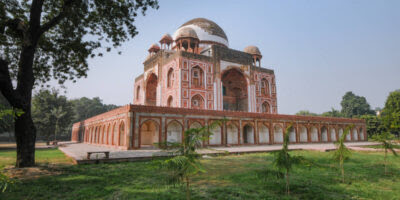
AKTC completes conservation works on Abdur Rahim Khan-i-Khanan’s Mausoleum in Delhi
Delhi, India, 17 December 2020 – The Aga Khan Trust for Culture (AKTC), in partnership with the Archaeological Survey of India and the InterGlobe Foundation, completed the conservation of Abdur Rahim Khan-i-Khanan’s Mausoleum in Delhi, India, today.
Rahim, Commander-in-Chief of the Mughal army, was not only a noble in the court of Emperor Akbar, but he was also a statesman, courtier, linguist, humanitarian, patron and, above all, poet. However, it is the mausoleum he built in AD 1598 for his wife, Mah Banu, that is the grandest of his surviving buildings – inspired by the architectural style of Humayun’s Tomb and, in turn, inspiring the Taj Mahal. On his death, Rahim was also buried in this mausoleum.
Commenting on the project completion, Ms Rohini Bhatia, Chairperson, InterGlobe Foundation, said, “India is known for its cultural heritage, hence the preservation of our art and culture is essential for our identity. At InterGlobe Foundation, we strive to conserve the cultural heritage of our nation. Through restoration projects like Rahim’s tomb in Delhi and Indra Kund stepwell in Rajasthan, InterGlobe Foundation has impacted thousands of lives while successfully preserving the historical and cultural values that bind us as a nation”.
Ratish Nanda, CEO, Aga Khan Trust for Culture, added, “Conservation at Rahim's tomb has been possible with a public-private partnership. Not only has a significant monument been conserved for posterity but dignity has been restored to the resting place of the cultural icon, Rahim. Conservation in the Indian context can benefit from thousands of years of building craft traditions and recourse to an inter-disciplinary scientific approach. 175,000 craft days of work has helped restore this grandeur”.
When AKTC began work on the mausoleum, it was a ruin. Despite its immense historical, architectural and archaeological significance and its prominent location in central Delhi, Rahim’s mausoleum was risking collapse. In 2014, the inter-disciplinary AKTC team – with the support and partnership of InterGlobe Foundation and the Archaeological Survey of India – commenced a six-year conservation effort. This became the largest conservation effort ever undertaken at any single monument of national importance in India. It was also the first ever privately undertaken conservation effort under the “Corporate Social Responsibility” banner.
Conservation works commenced with challenging structural repairs – to fix the cracks that threatened the building with structural collapse and included restoration of the intricate ornamentation – in stone and lime plaster. Collapsed portions of the building were reconstructed using traditional materials and building crafts. Restoration of marble cladding was limited - to strengthen the base of the dome and to indicate to visitors the original finish of the dome. In all, 175,000 man-days of work by master craftsmen were undertaken as part of its conservation.
The conservation effort on the monument has included celebrating Rahim’s cultural legacy. Two major publications, “Celebrating Rahim” and, “Abdur Rahim Khan-i-khanan – Kavya, Saundarya, Sarthakta” have been produced.
More images at:
https://www.akdn.org/press-release/aktc ... leum-delhi
Video Quote: Social and Economic Benefits of the Restoration Work
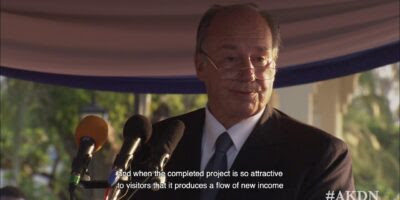
Video:
https://www.youtube.com/watch?v=0Rml4ukLnU8

Video:
https://www.youtube.com/watch?v=0Rml4ukLnU8
World Snapshots: Syria – The Old Souks of Aleppo.
Video:
https://www.youtube.com/watch?v=aDlE4oo30N4
In Syria, the Aga Khan Trust for Culture's award-winning work on the World Heritage site of Aleppo – for which it received an ICCROM-Sharjah Award for Best Practice in Cultural Heritage Conservation and Management in the Arab region – will be featured on TV5 Monde's Clin d'oeil sur le monde ("World Snapshots").
Video:
https://www.youtube.com/watch?v=aDlE4oo30N4
In Syria, the Aga Khan Trust for Culture's award-winning work on the World Heritage site of Aleppo – for which it received an ICCROM-Sharjah Award for Best Practice in Cultural Heritage Conservation and Management in the Arab region – will be featured on TV5 Monde's Clin d'oeil sur le monde ("World Snapshots").
In pics: EU, Spain ambassadors visit Aga Khan projects in Egypt, express admiration of Azhar Park
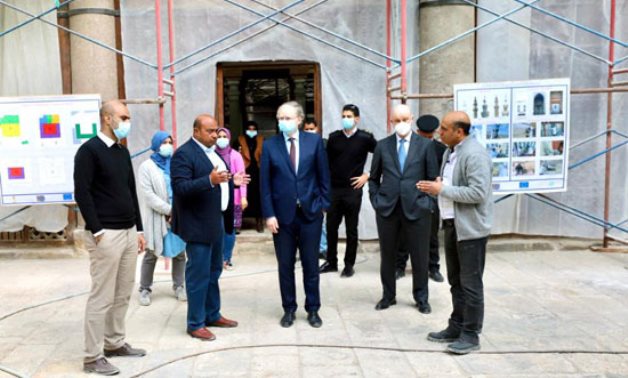
EU, Spain ambassadors visit Aga Khan projects in Egypt, express admiration for Azhar Park
CAIRO – 17 March 2021: The ambassadors of the European Union and Spain visited the Aga Khan projects in Egypt, and expressed their admiration for Al-Azhar Park.
European Union Ambassador in Cairo, Christian Berger, and Spanish Ambassador in Cairo, Ramon Gilles Cesar visited Tuesday the projects of the Aga Khan Cultural Services Company, part of which is financed by the European Union.
The two ambassadors were received by Sherif El-Erian, Executive Director of the Aga Khan Cultural Services in Egypt, who provided a detailed explanation of the company's projects during the tour.
The ambassadors of the European Union and Spain expressed their great admiration for Al-Azhar Park, the handicraft project in Al-Darb Al-Ahmar, as well as the ongoing restoration works at Al-Maridani Mosque, of which a large part is funded by the European Union.
https://www.egypttoday.com/Article/1/99 ... rojects-in

EU, Spain ambassadors visit Aga Khan projects in Egypt, express admiration for Azhar Park
CAIRO – 17 March 2021: The ambassadors of the European Union and Spain visited the Aga Khan projects in Egypt, and expressed their admiration for Al-Azhar Park.
European Union Ambassador in Cairo, Christian Berger, and Spanish Ambassador in Cairo, Ramon Gilles Cesar visited Tuesday the projects of the Aga Khan Cultural Services Company, part of which is financed by the European Union.
The two ambassadors were received by Sherif El-Erian, Executive Director of the Aga Khan Cultural Services in Egypt, who provided a detailed explanation of the company's projects during the tour.
The ambassadors of the European Union and Spain expressed their great admiration for Al-Azhar Park, the handicraft project in Al-Darb Al-Ahmar, as well as the ongoing restoration works at Al-Maridani Mosque, of which a large part is funded by the European Union.
https://www.egypttoday.com/Article/1/99 ... rojects-in
Ensuring long-term preservation: Qutb Shahi Heritage Park, Hyderabad, India
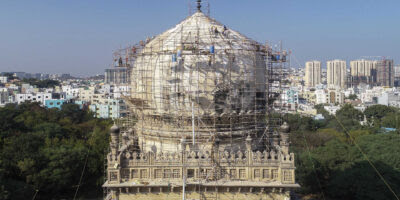
Since 2013, the Aga Khan Trust for Culture, in partnership with the Department of Heritage Telangana, has been undertaking conservation works on all monuments along with holistic landscape development of the 106-acre Qutb Shahi Heritage Park.
In the 16th century, while the Mughals were building grand fortifications, mausoleums and mosques in north India, the Qutb Shahi dynasty also built majestic structures in its capital, present-day Hyderabad. Builders and patrons of learning, the Qutb Shahi dynasty ruled the region for 169 years in the 16th and 17th centuries. The complex includes 40 mausoleums, 23 mosques, five baolis (step-wells), a hammam, pavilions and garden structures.
Eight years of dedicated effort to conserve the historic monuments and step-wells, and restore the landscape including pathways, water bodies and green spaces covered with grass and fruit trees has reinstated the original grandeur envisaged by the Qutb Shahi builders.
As with the Trust’s other conservation works including those in Delhi, Kabul and Cairo, the creation of this heritage park in Hyderabad carried out by master craftsmen is intended to not only promote tourism and lead a revival of building crafts in the region, but also instil a sense of pride in the city’s residents and generate potential economic opportunities for local businesses.
Photo gallery at:
https://www.akdn.org/gallery/ensuring-l ... abad-india

Since 2013, the Aga Khan Trust for Culture, in partnership with the Department of Heritage Telangana, has been undertaking conservation works on all monuments along with holistic landscape development of the 106-acre Qutb Shahi Heritage Park.
In the 16th century, while the Mughals were building grand fortifications, mausoleums and mosques in north India, the Qutb Shahi dynasty also built majestic structures in its capital, present-day Hyderabad. Builders and patrons of learning, the Qutb Shahi dynasty ruled the region for 169 years in the 16th and 17th centuries. The complex includes 40 mausoleums, 23 mosques, five baolis (step-wells), a hammam, pavilions and garden structures.
Eight years of dedicated effort to conserve the historic monuments and step-wells, and restore the landscape including pathways, water bodies and green spaces covered with grass and fruit trees has reinstated the original grandeur envisaged by the Qutb Shahi builders.
As with the Trust’s other conservation works including those in Delhi, Kabul and Cairo, the creation of this heritage park in Hyderabad carried out by master craftsmen is intended to not only promote tourism and lead a revival of building crafts in the region, but also instil a sense of pride in the city’s residents and generate potential economic opportunities for local businesses.
Photo gallery at:
https://www.akdn.org/gallery/ensuring-l ... abad-india
The Touchstones of Identity: Preserving World Heritage
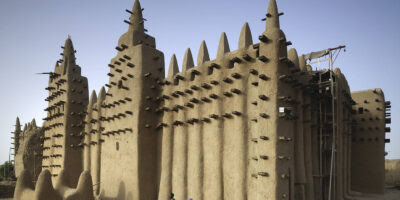
“The Aga Khan Historic Cities Programme (AKHCP) was created to test the hypothesis that culture was, and is, an integral component of the development equation,” says Shiraz Allibhai, Deputy-Director of the Aga Khan Trust for Culture (AKTC), “and that it can be a powerful tool to improve quality of life.” AKHCP devised a unique approach to urban regeneration that involves restoration and conservation, the creation of parks and gardens, urban rehabilitation and employment and vocational training programmes.
For three decades, AKHCP not only tested, but revised and refined its approach at 11 World Heritage Sites considered by the United Nations Educational, Scientific and Cultural Organization (UNESCO) to be of “outstanding value to humanity”. Many of these sites are in cities in the Muslim world, which are suffering from poverty, lack of infrastructure and services, post-war conditions, population growth and environmental degradation. But many of these same cities contain priceless riches that could be turned into assets for those living amongst them.
From Mali to Malaysia, AKHCP’s urban regeneration projects have helped transform historic cities and the lives of countless numbers of people. Overall, AKTC has worked on over 350 restoration and conservation projects in 11 countries, including 11 UNESCO World Heritage Sites, and created 10 major parks and gardens that have been visited by over 50 million people. AKHCP’s work, which has received over 18 major awards and is now recognised as the highest standard in restoration, is also helping shape government policy on the value of historic urban centres and the role of culture in strengthening identity and instilling hope.
For more information about AKHCP's work on World Heritage Sites.
Gallery at:
https://www.akdn.org/gallery/touchstone ... d-heritage

“The Aga Khan Historic Cities Programme (AKHCP) was created to test the hypothesis that culture was, and is, an integral component of the development equation,” says Shiraz Allibhai, Deputy-Director of the Aga Khan Trust for Culture (AKTC), “and that it can be a powerful tool to improve quality of life.” AKHCP devised a unique approach to urban regeneration that involves restoration and conservation, the creation of parks and gardens, urban rehabilitation and employment and vocational training programmes.
For three decades, AKHCP not only tested, but revised and refined its approach at 11 World Heritage Sites considered by the United Nations Educational, Scientific and Cultural Organization (UNESCO) to be of “outstanding value to humanity”. Many of these sites are in cities in the Muslim world, which are suffering from poverty, lack of infrastructure and services, post-war conditions, population growth and environmental degradation. But many of these same cities contain priceless riches that could be turned into assets for those living amongst them.
From Mali to Malaysia, AKHCP’s urban regeneration projects have helped transform historic cities and the lives of countless numbers of people. Overall, AKTC has worked on over 350 restoration and conservation projects in 11 countries, including 11 UNESCO World Heritage Sites, and created 10 major parks and gardens that have been visited by over 50 million people. AKHCP’s work, which has received over 18 major awards and is now recognised as the highest standard in restoration, is also helping shape government policy on the value of historic urban centres and the role of culture in strengthening identity and instilling hope.
For more information about AKHCP's work on World Heritage Sites.
Gallery at:
https://www.akdn.org/gallery/touchstone ... d-heritage
Video Quote: Importance of Open Spaces in Healthy City Landscape
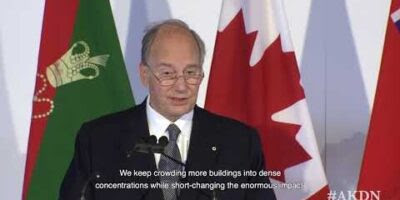
Video:
https://www.youtube.com/watch?v=vdL0xbXNS20

Video:
https://www.youtube.com/watch?v=vdL0xbXNS20
Video Quote: On Creating Green Spaces in Urban Environments

Video:
https://www.youtube.com/watch?v=CahkR-7E9cA

Video:
https://www.youtube.com/watch?v=CahkR-7E9cA
